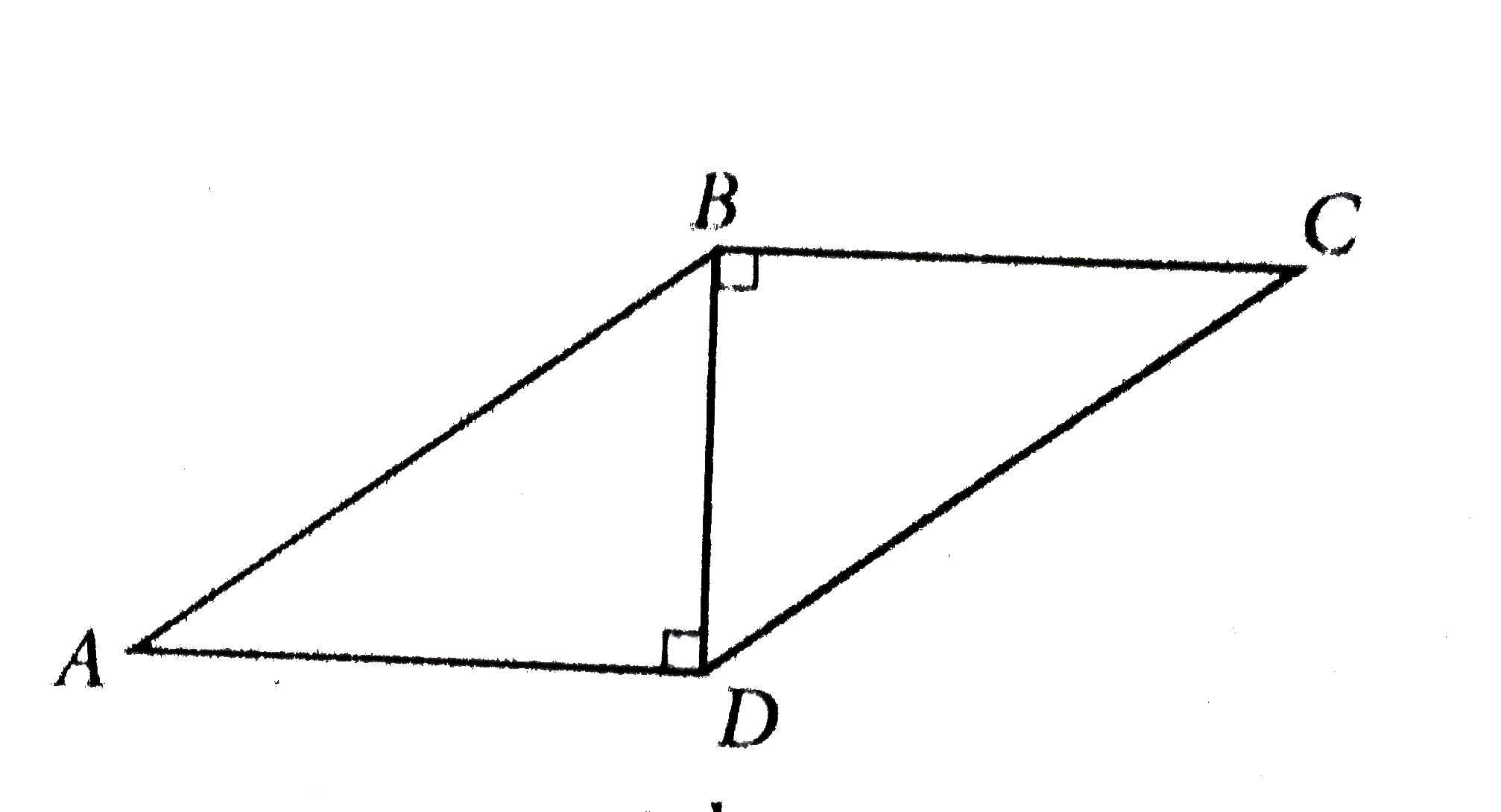In equilateral △ABC,AD⊥BC and BC=x cm. Find, in terms of x, the length of AD.
To find the length of AD in terms of x in the equilateral triangle ABC where AD is perpendicular to BC, we can follow these steps:
1. Understand the Triangle:
- We have an equilateral triangle ABC, where all sides are equal, and all angles are 60 degrees.
- Let BC = x cm.
2. Identify the Perpendicular:
- Since AD is perpendicular to BC, it divides BC into two equal segments. Therefore, BD = DC = x/2 cm.
3. Use Right Triangle Properties:
- In triangle ABD, we can apply the properties of a right triangle. Here, angle ADB is 90 degrees, angle ABD is 60 degrees, and angle BAD is 30 degrees (because the angles in triangle ABC are 60 degrees each).
4. Apply Trigonometric Ratios:
- We can use the tangent function for angle ABD:
tan(60∘)=ADBD
- We know that tan(60∘)=√3.
5. Substitute the Known Values:
- Substitute BD = x/2 into the equation:
√3=ADx/2
6. Solve for AD:
- Rearranging the equation gives:
AD=√3⋅x2
- Therefore, the length of AD in terms of x is:
AD=√32x
Final Answer:
The length of AD in terms of x is:
AD=√32x cm
- We have an equilateral triangle ABC, where all sides are equal, and all angles are 60 degrees.
- Let BC = x cm.
- Since AD is perpendicular to BC, it divides BC into two equal segments. Therefore, BD = DC = x/2 cm.
- In triangle ABD, we can apply the properties of a right triangle. Here, angle ADB is 90 degrees, angle ABD is 60 degrees, and angle BAD is 30 degrees (because the angles in triangle ABC are 60 degrees each).
- We can use the tangent function for angle ABD:
tan(60∘)=ADBD
- We know that tan(60∘)=√3.
- Substitute BD = x/2 into the equation:
√3=ADx/2
- Rearranging the equation gives:
AD=√3⋅x2
- Therefore, the length of AD in terms of x is:
AD=√32x
The length of AD in terms of x is:
AD=√32x cm
Topper's Solved these Questions
- PYTHAGORAS THEORAMBOOK - ICSECHAPTER - PYTHAGORAS THEORAMEXERCISE - QUESTIONS
9 Videos
- PYTHAGORAS THEORAMBOOK - ICSECHAPTER - PYTHAGORAS THEORAMEXERCISE - QUESTIONS
9 Videos
- MID-POINT THEOREMBOOK - ICSECHAPTER - MID-POINT THEOREMEXERCISE - 4 MARKS QUESTION
15 Videos
- PYTHAGORAS THEOREMBOOK - ICSECHAPTER - PYTHAGORAS THEOREMEXERCISE - 4 MARKS QUESTIONS
9 Videos
Similar Questions
AD is draw perendicular to base BC of an equilateral triangle ABC. Given BC=10 cm find the length of AD, correct to 1 place of decimal.
View SolutionABC is an isosceles triangle with AB = AC = 2a and BC = a . If AD⊥BC, find the length of AD .
View Solution
If AD=2CD,andDB=BC=6, what is the length of side AB?
View SolutionIn triangle ABC,∠ABC−90∘,AB=2a+1andBC=2a2+2a. Find AC in terms of 'a' if a= 8 , find the lengths of the sides of the triangles.
View SolutionIn ΔABC, angle A is 120∘,BC+CA=20,andAB+BC=21 Find the length of the side BC
View SolutionIn the given figure, ΔABC~ΔADE. If AE:EC=4:7andDE=6.6cm, find BC. If *x' be the length of the perpendicular from A to DE, find the length of perpendicular from A to BC in terms of ‘x'.

View Solution△ABC is right angled at A and AD⊥BC. If BC = 13 cm and AC= 5 cm. find the ratio of the areas of △ABCand△ADC.
View SolutionΔABC is right-angled at C. If AC=5cmandBC=12cm find the length of AB.
View SolutionIn the given figure, AB||CDandBC||AD. Find the values of x, y and z

View SolutionΔABC is right angled at A (Fig 11.25). AD is perpendicular to BC. If AB=5cm,BC=13 and, find the area of ΔABC Also find the lenght of AD.
View Solution
